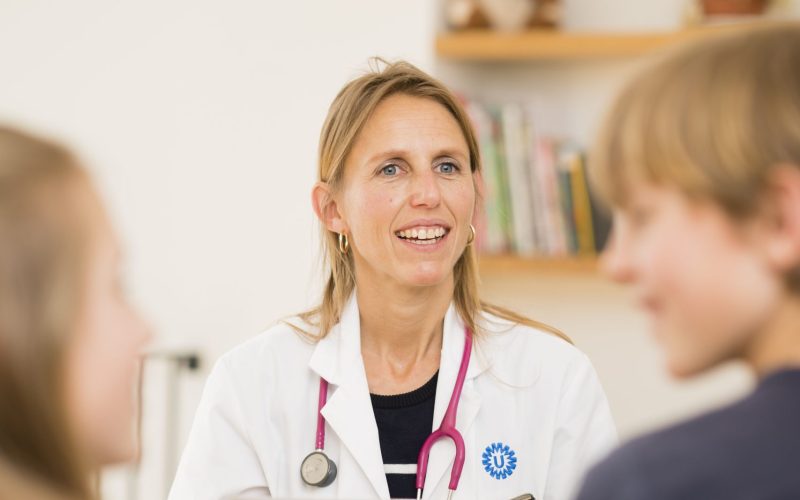An American baby is the first ever patient to successfully receive a personalized gene correction treatment. A true scientific milestone. Sabine Fuchs follows the news closely. “What they have done here, is truly incredible and exactly what we are aiming for as well.”
Researchers in the Children’s Hospital Philadelphia successfully repaired the DNA of a baby with a rare metabolic disease. With a so-called ‘base-editing’ technique they repaired the DNA in liver cells, they report in the New England Journal of Medicine. This process involves actually repairing the DNA and not, as with standard gene therapy, adding a health gene or turning off a pathogenic gene.
Sabine Fuchs, professor metabolic diseases and innovative therapies at UMC Utrecht, wants to make metabolic diseases treatable by focusing on the genetic cause. Her team works with similar techniques.
“This means that these gene-correction therapies – leading to complete repair of the disease-causing mutation – are really becoming a reality for our patients. Although we are not yet able to give this to patients, this is very hopeful. Especially for patients with very rare diseases and very rare mutations, for whom in general, there is limited industrial interest.”
“I actually do the same thing as this group has done at unprecedented speed. It is exactly how I envision treating patients with rare diseases. The patient comes to your office, you rapidly establish the exact (genetic) diagnosis and then devise the optimal therapeutic strategy to treat the patient before irreversible damage has occurred. This proves that that is really possible. And the speed at which this was done sets an example for other research groups. They were able to optimize the system for the specific mutation, test for safety in different animal models and tackle all regulatory and practical hurdles, all within 6 months.”
“In this case, everything came together. This mutation could be corrected efficiently and safely using base-editing and the disease was in the liver, the easiest organ to target. While this is really exciting, it can only be used for a small subset of patients with genetic diseases. I try to develop such a pipeline, also focusing on prime editing. This is a much more versatile gene-editing technique that can correct up to 90% of all mutations but is also significantly more laborious to optimize. In addition, we also focus on other organs than the liver.”
“I hope that we can with such a platform approach in the future for a much larger group of patients. And thereby truly transforming therapies for the many different patients with metabolic and other genetic diseases.”
